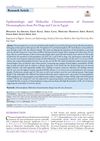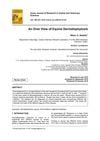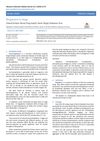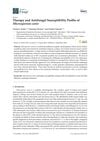Mechanisms of Dermatophyte Invasion on New Zealand Rabbit Skin Models
January 2020
in “
E3S web of conferences
”
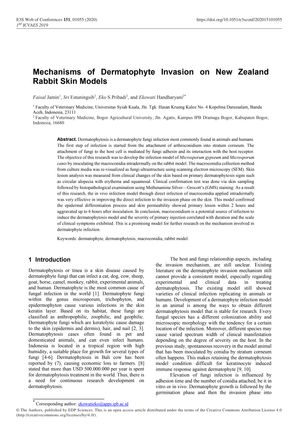
TLDR The study found that injecting spores directly into rabbit skin effectively caused fungal skin infections, with symptoms worsening over time.
The study aimed to develop an infection model for dermatophytosis, a fungal infection caused by dermatophytes, using New Zealand rabbits. Researchers inoculated the rabbits intradermally with macroconidia of Microsporum gypseum and Microsporum canis. They used scanning electron microscopy (SEM) to visualize the fungi and assessed skin lesions based on signs of primary dermatophytosis, such as circular alopecia with erythema and scaling. Histopathological examination with Methenamine Silver—Grocott’s (GMS) staining was used for clinical confirmation. The results showed that direct intradermal inoculation of macroconidia was effective in inducing the infection and invasion phase on the skin, with primary lesions appearing within 2 hours and worsening up to 6 hours post-inoculation. The study concluded that macroconidia are a potential source of infection for inducing dermatophytosis and that the severity of the infection is correlated with the duration and scale of clinical symptoms. This model is considered promising for future research on the mechanisms of dermatophyte infections.
